Automated Plant Care System for Frequent Travelers
by itaitulchy in Living > Gardening
193 Views, 1 Favorites, 0 Comments
Automated Plant Care System for Frequent Travelers

Are you a plant lover but also a frequent traveler? Worry no more about your green friends at home! Our Automated Plant Care System ensures your plants are well-hydrated and receive enough light, even in your absence. This DIY project uses ESP32 Microcontroller and Arduino, integrating with Blynk and Make.com for remote monitoring and control. Perfect for anyone who wants to keep their plants thriving without constant supervision.
Watch it in action: https://youtu.be/cc41FihNoL0
Supplies


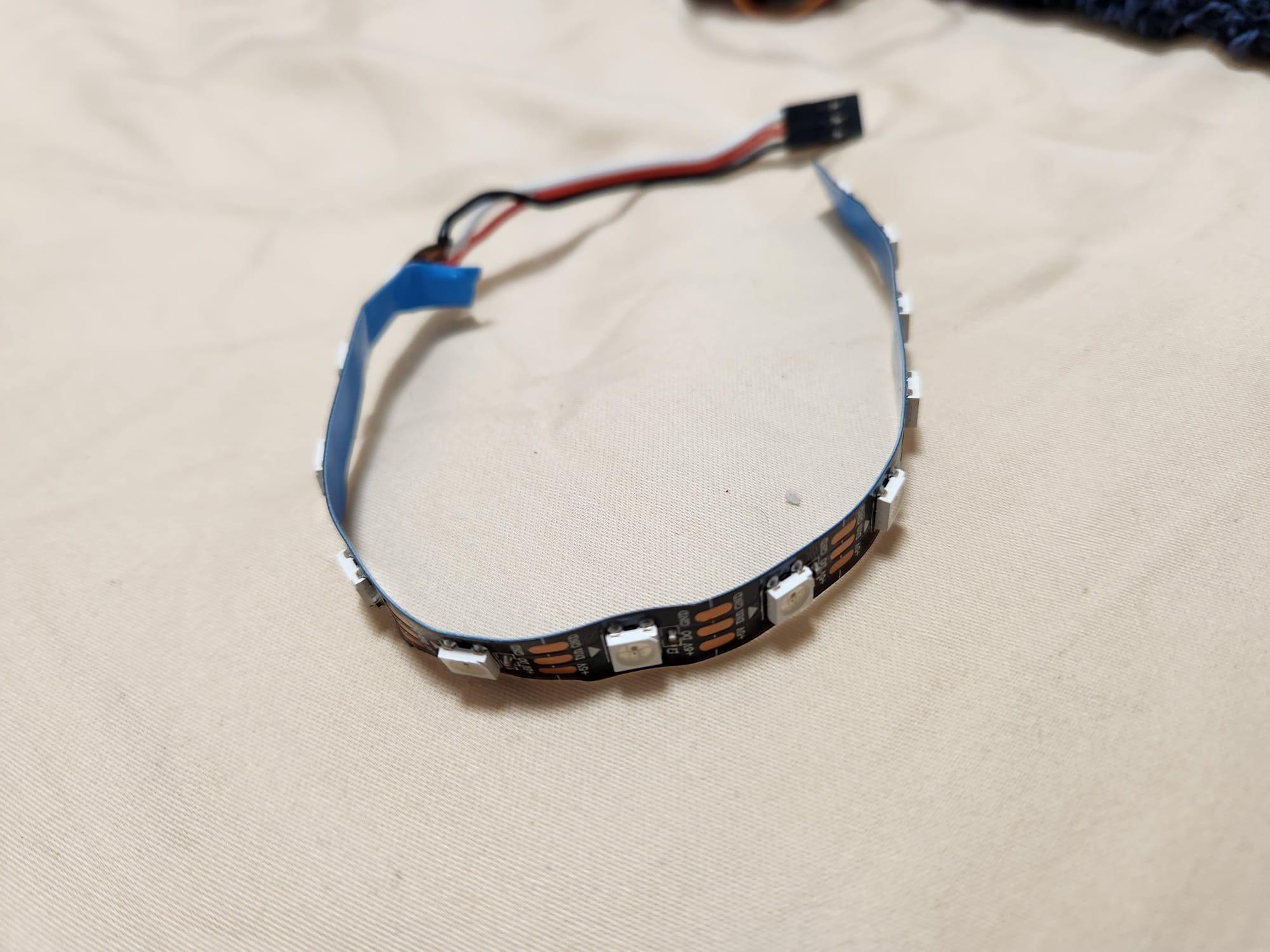




- ESP32 Microcontroller
- USB-C Cable
- Capacitative Soil Moisture Sensor v1.2
- Servo Motor
- LED Strip
- Light Sensor
- Blynk and Make.com accounts
- Arduino IDE for uploading code to ESP32
- Water Tank
- A Plant
- Battery Case
- X4 AA Batteries
Setting Up the Hardware
- Connect your ESP32 to your computer using the USB-C cable.
- Connect the Moisture Sensor to pin 33 on the ESP32.
- Attach the Light Sensor to pin 34.
- Connect the LED strip to pin 19.
- Finally, connect the Servo Motor to pin 23.
Software Setup and Code Explanation
- Install the Arduino IDE and add the ESP32 board to the board manager.
- Install the necessary libraries (WiFi, BlynkSimpleEsp32, Adafruit_NeoPixel, ESP32Servo) in the Arduino IDE.
- Insert the provided code into the Arduino IDE. Make sure to replace the placeholders with your WiFi and Blynk credentials.
Downloads
Blynk Configuration


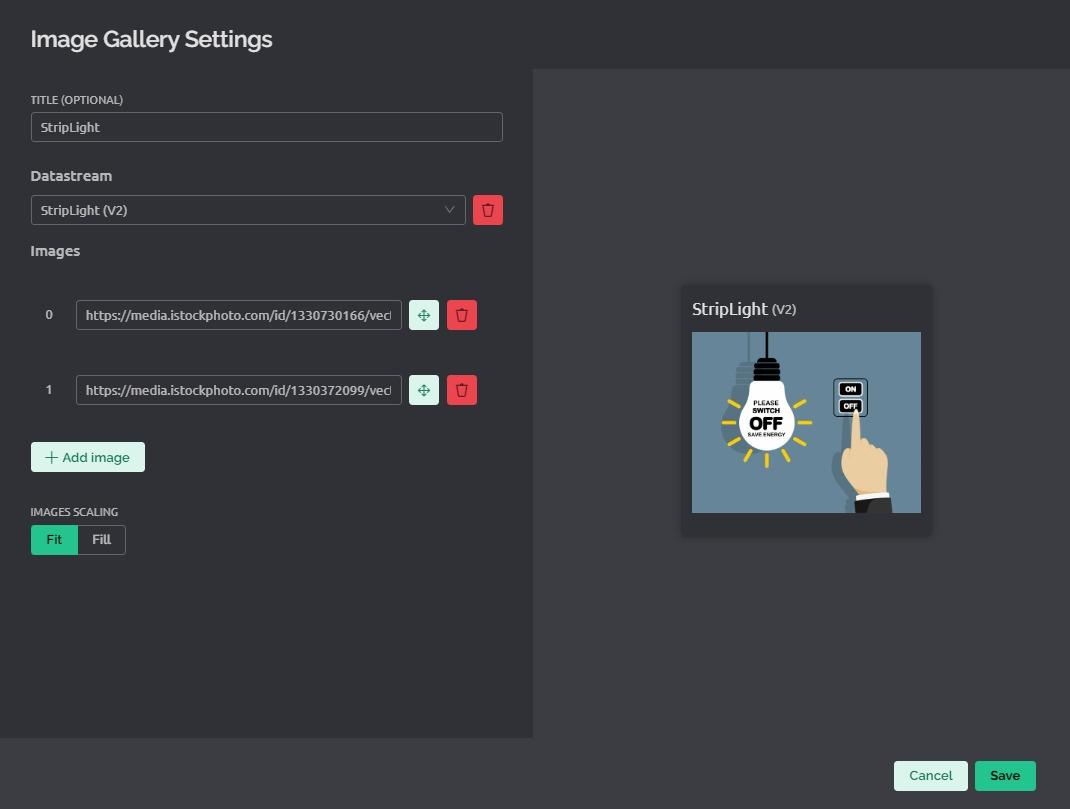


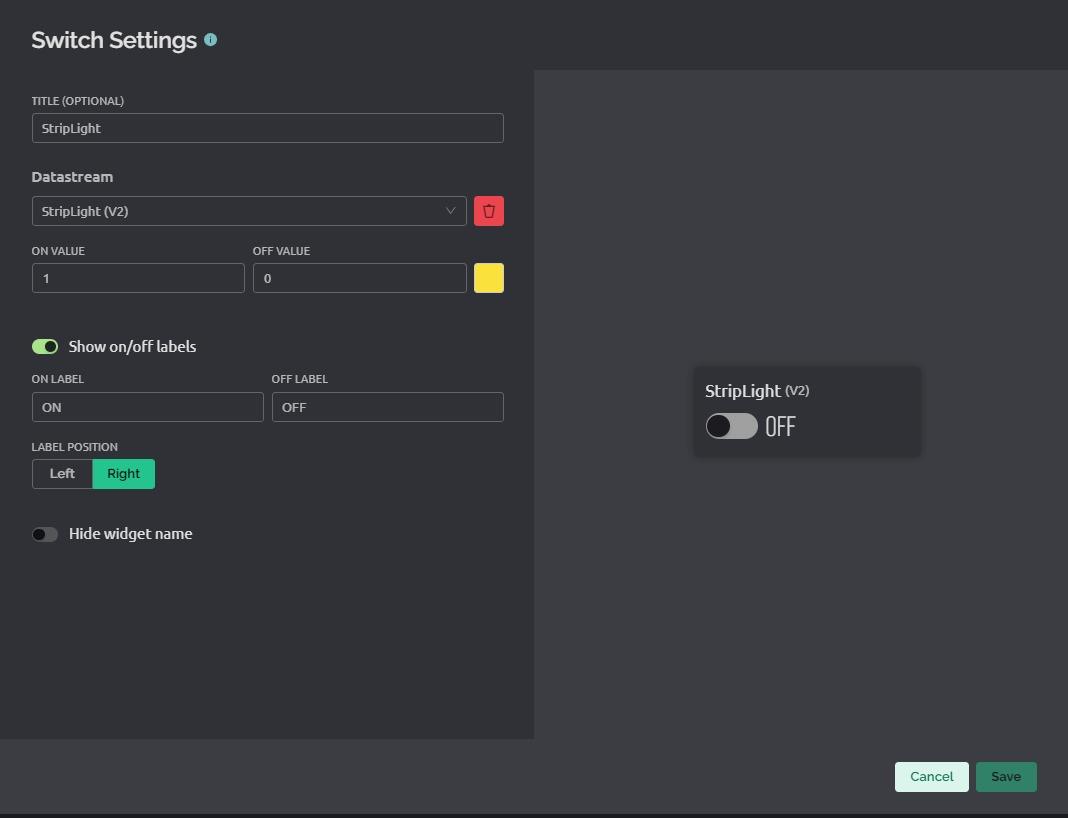

- Open the Blynk app and sign up for a new account using your email address. You will receive a confirmation email; click the link inside to verify your account.
- Create a New Project:
- Once logged in, tap the “New Project” button in the Blynk app.
- Enter a name for your project, e.g., "Automated Plant Care".
- Select “ESP32 Dev Board” from the list of devices.
- Choose the connection type (usually WiFi for ESP32 projects).
- Tap “Create”. Blynk will send an Auth Token to your email. Keep this token; you will need it to connect your ESP32 to the Blynk server.
3. Set up the Datastreams and PINs as shown in the "Blynk Connections" image attached. Then set up each of the switches and gauges as shown in the images provided.
Telegram Bot Creation
- Download Telegram
- Create a Telegram bot:
- Start BotFather:
- Open your Telegram app, search for "BotFather", or type @BotFather in the search bar.
- Start a conversation with BotFather by clicking the "Start" button at the bottom of the screen.
4.Create New Bot:
- Type /newbot and send it to BotFather.
- BotFather will ask you to choose a name for your bot. This is a friendly name and can be anything you like.
- Next, you'll need to choose a username for your bot. This must end in ‘bot’ (e.g., PlantCare_bot).
5.Save Your Bot Token:
- After creating your bot, BotFather will give you a token. This is important and acts as the password for your bot. Save it securely; you'll need it to connect your bot to other services, like Make.com.
Adding Your Bot to a Telegram Channel:
- Create or Navigate to Your Channel:
- If you don't already have a Telegram channel, you can create one by clicking the pencil icon in the top-right corner of the Telegram interface and selecting “New Channel”.
- If you already have a channel, just open it.
2.Add The Bot to Your Channel:
- In your channel, click on your channel's name at the top to open the Channel info.
- Go to “Administrators”, then click “Add Administrator”.
- Search for your bot’s username and select it.
- Set permissions for your bot. For notifications, you usually need to allow posting messages.
Make.Com Configuration

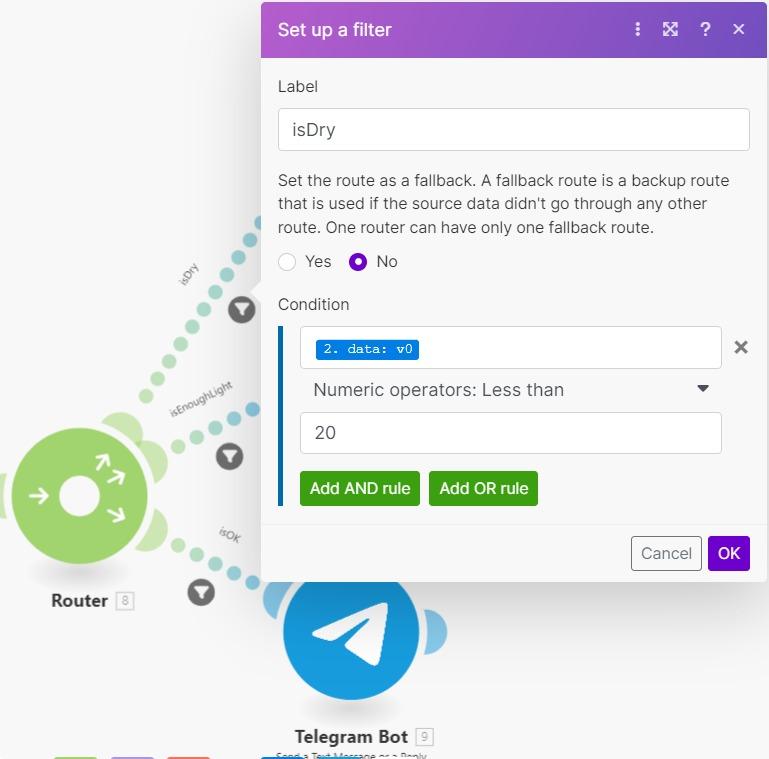
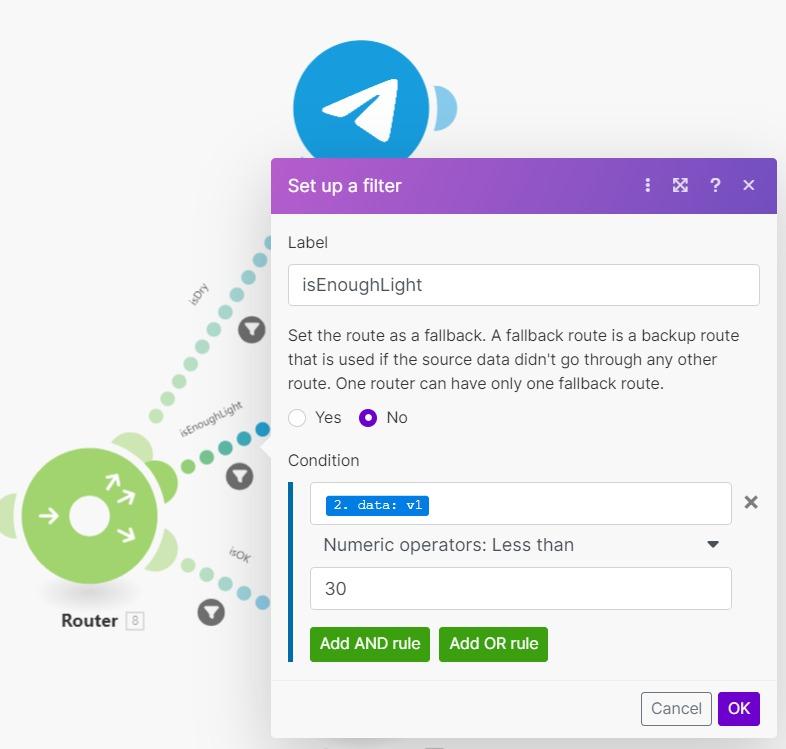

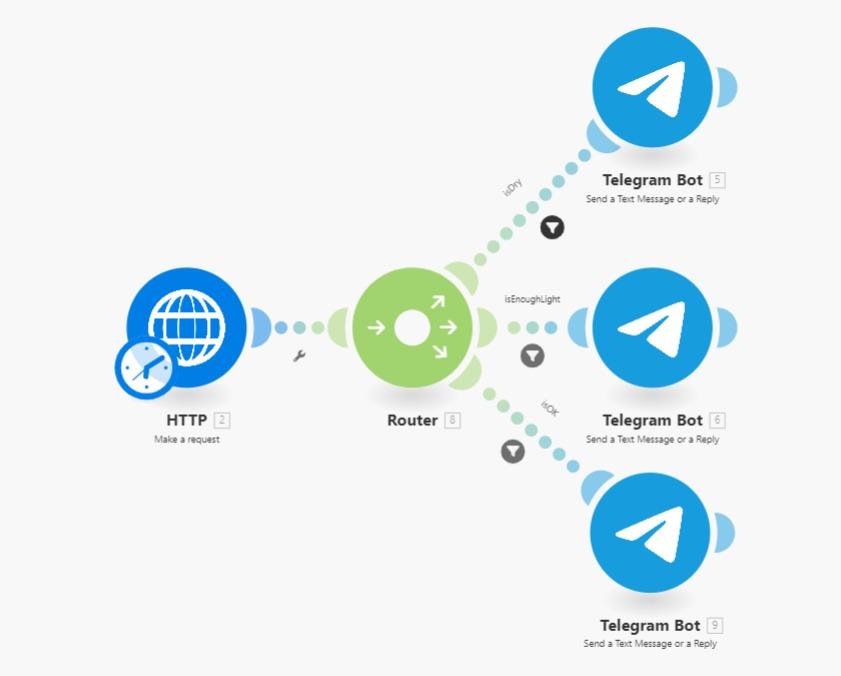

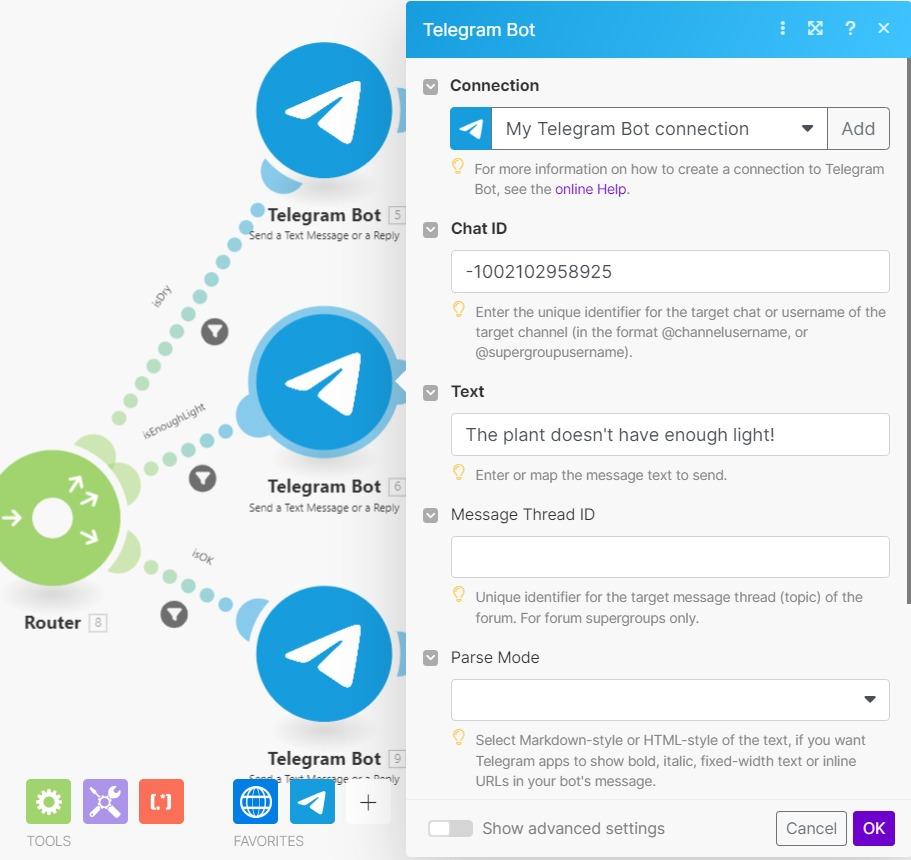

- Go to Make.com and sign up for a new account or log in if you already have one.
- Once logged in, click on “Create a new scenario” from your dashboard. A new, blank scenario workspace will open.
- Click the plus (+) button on the workspace to add a new module. For this project, you will need the following modules: HTTP Request, Router, and Telegram.
- Create the same modules as in the images provided, with the configuration shown in the images. Make sure to change the telegram token to your bot's token, and the auth token provided in the HTTP requests' URL to your auth token from Blynk.
Connecting Everything Together!
Choose a typical live plant.
Connect the ESP32's sensors and outputs to the plant as follows:
a. Insert the moisture sensor into the soil of the plant.
b. Position the light sensor strategically to accurately measure the plant's light exposure.
c. Arrange the light strip (or alternative light source) creatively to provide sufficient light when turned on.
d. Position the servo water system (or alternative output) creatively to ensure proper watering of the plant when activated.
And there you have it!
We're hoping that you'll find our project not just fun and creative, but also a breeze to bring to life with this guide! Don't hesitate to tweak, transform, or turbocharge any part of the project to your heart's content. Let your imagination lead the way and make it uniquely yours. Enjoy the journey and happy tinkering!